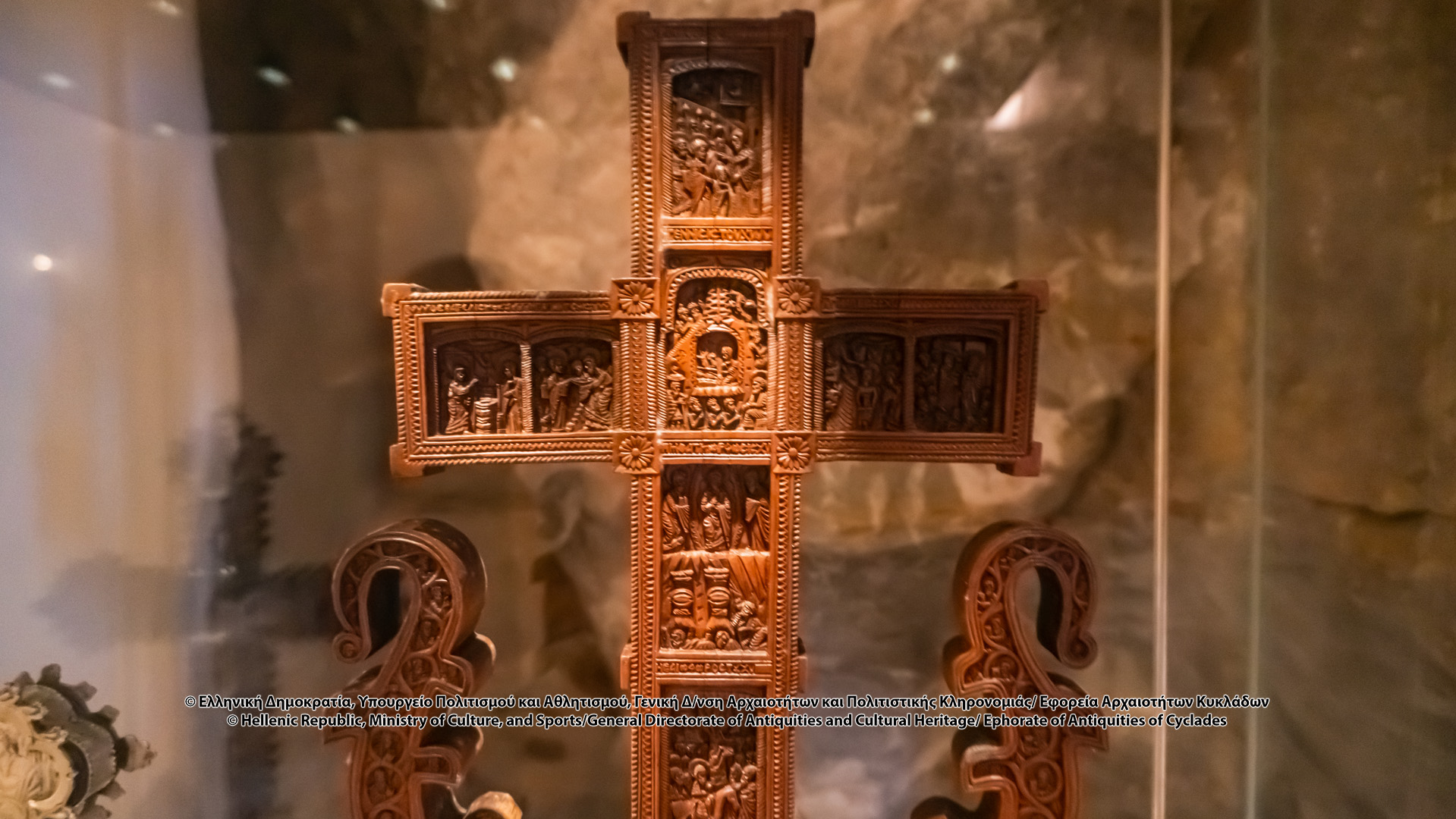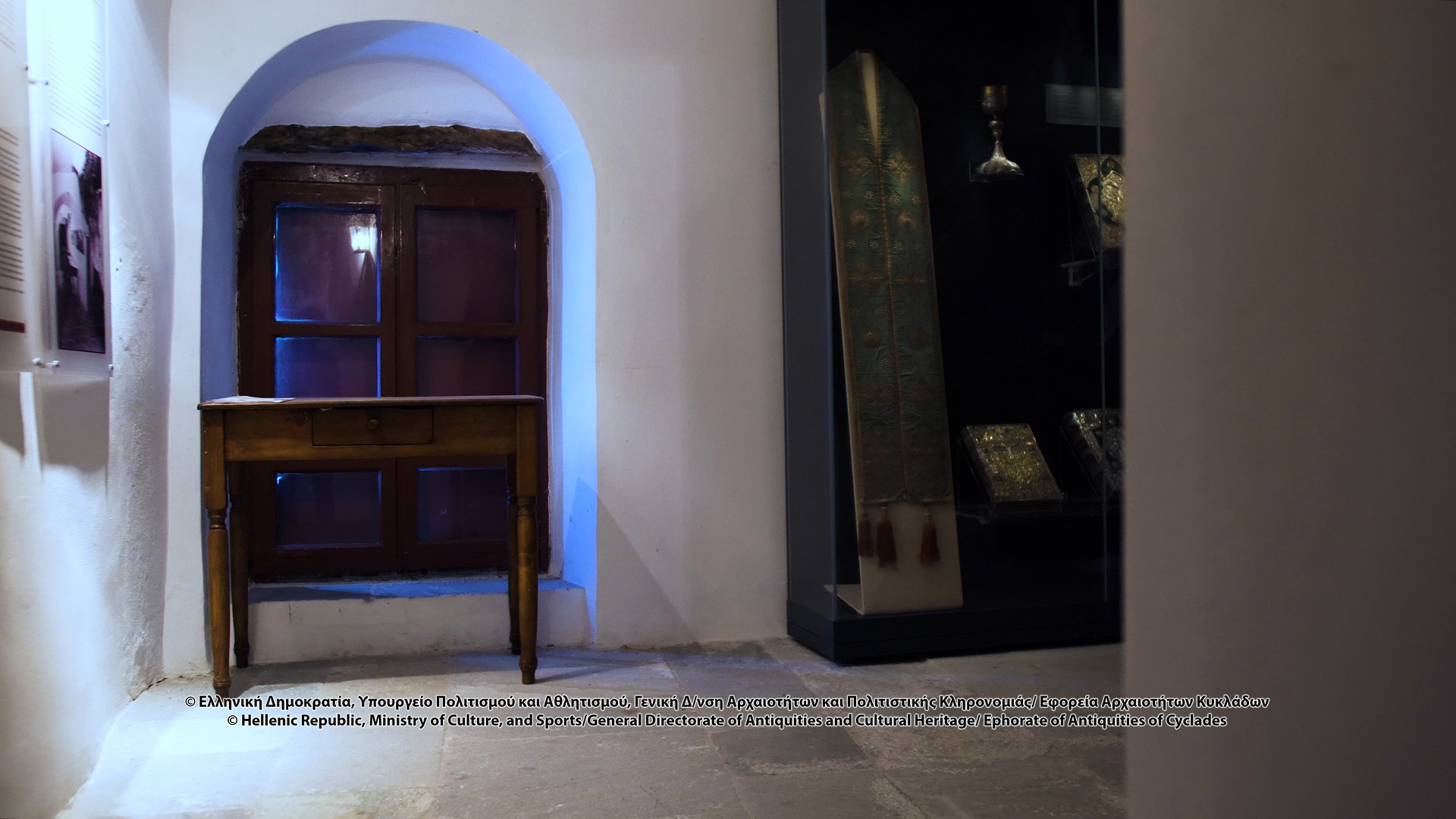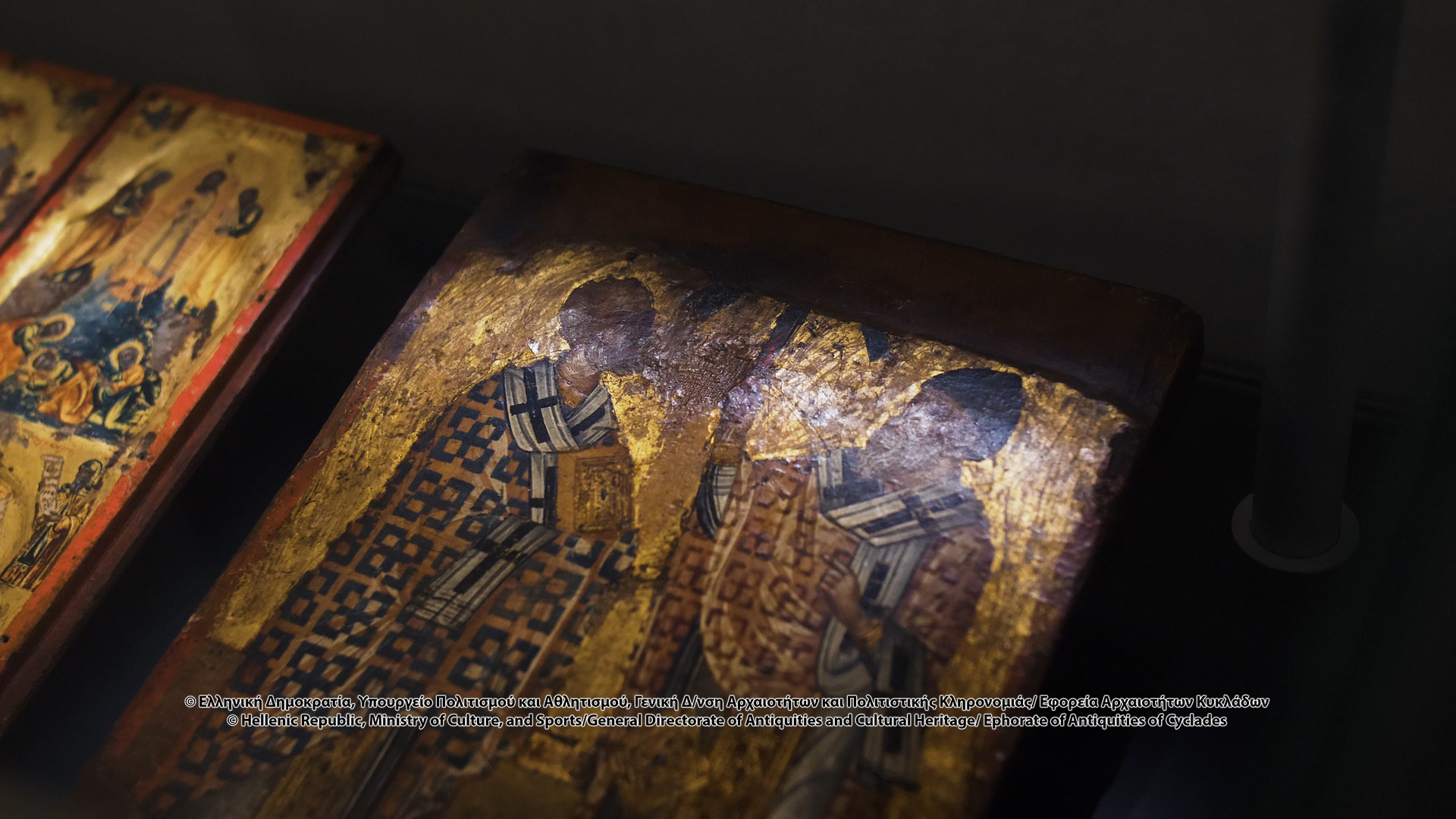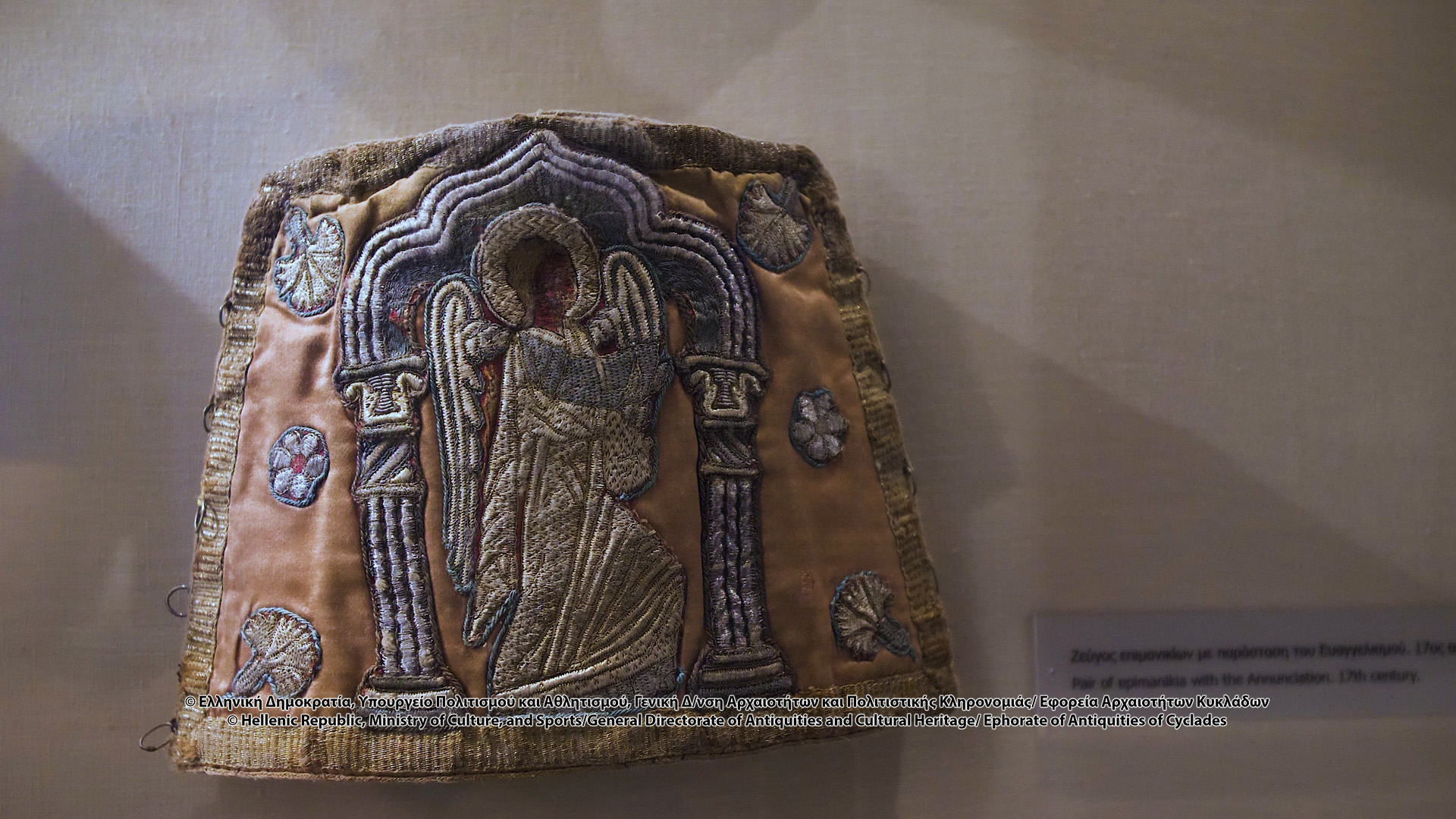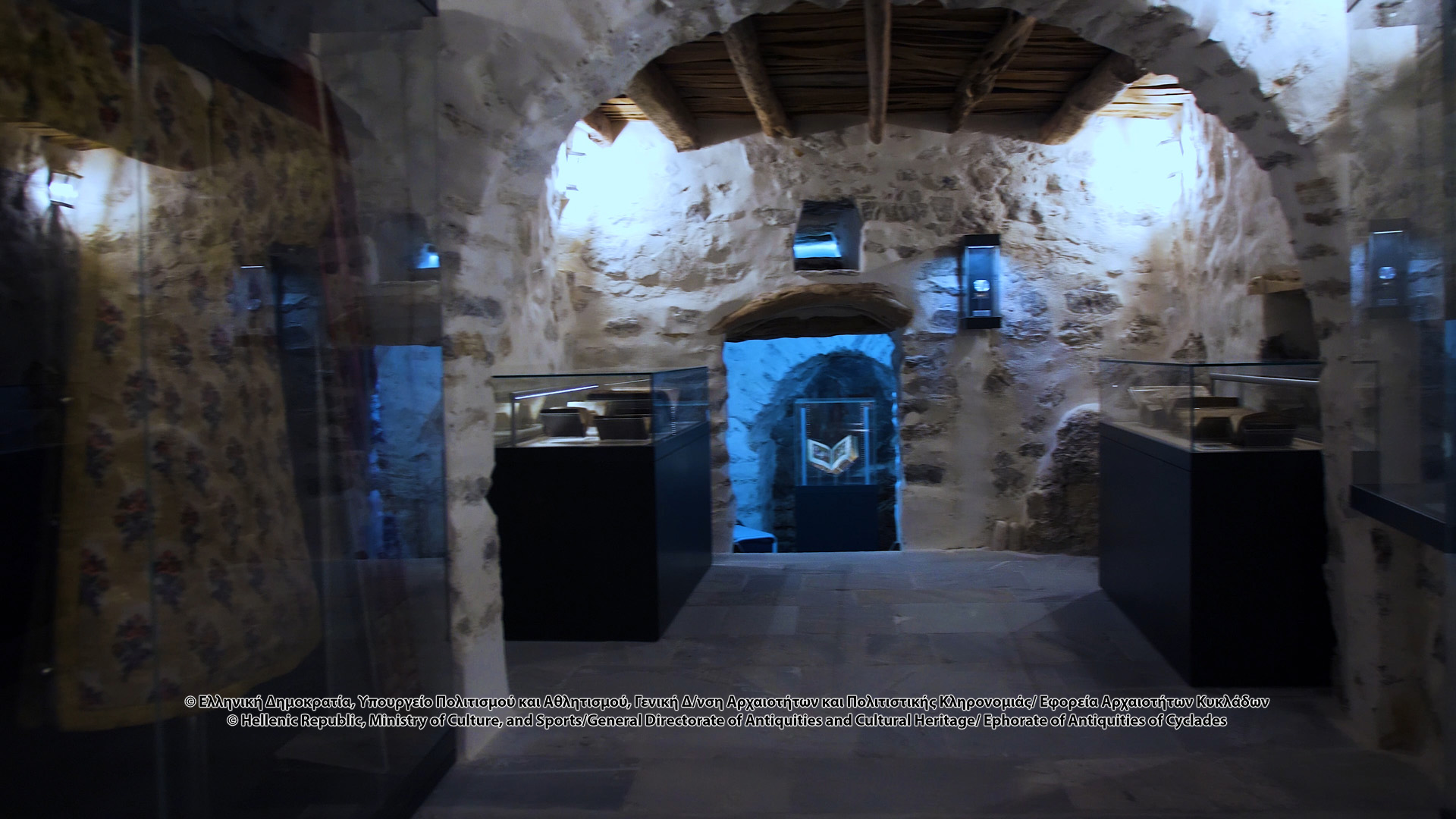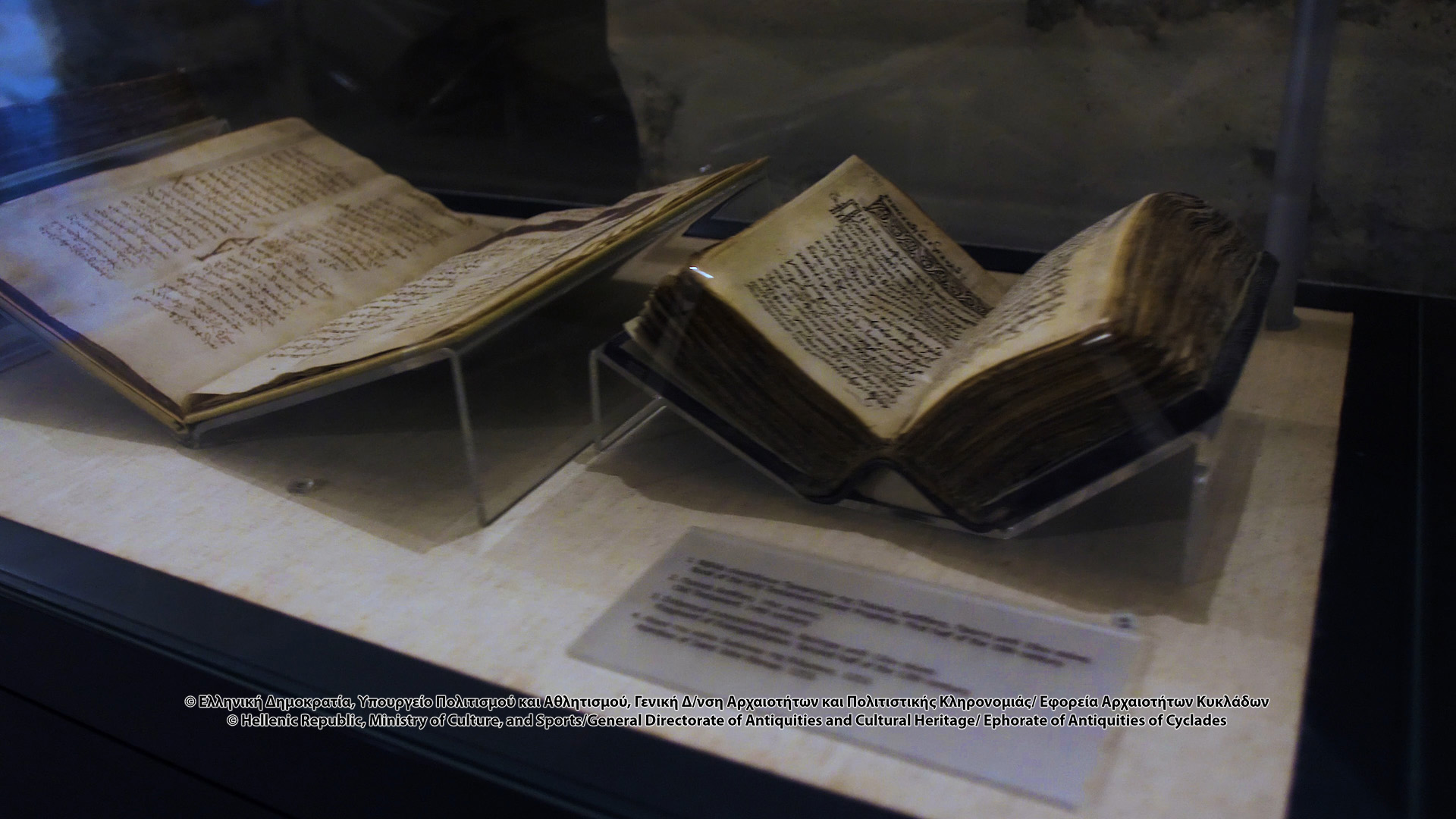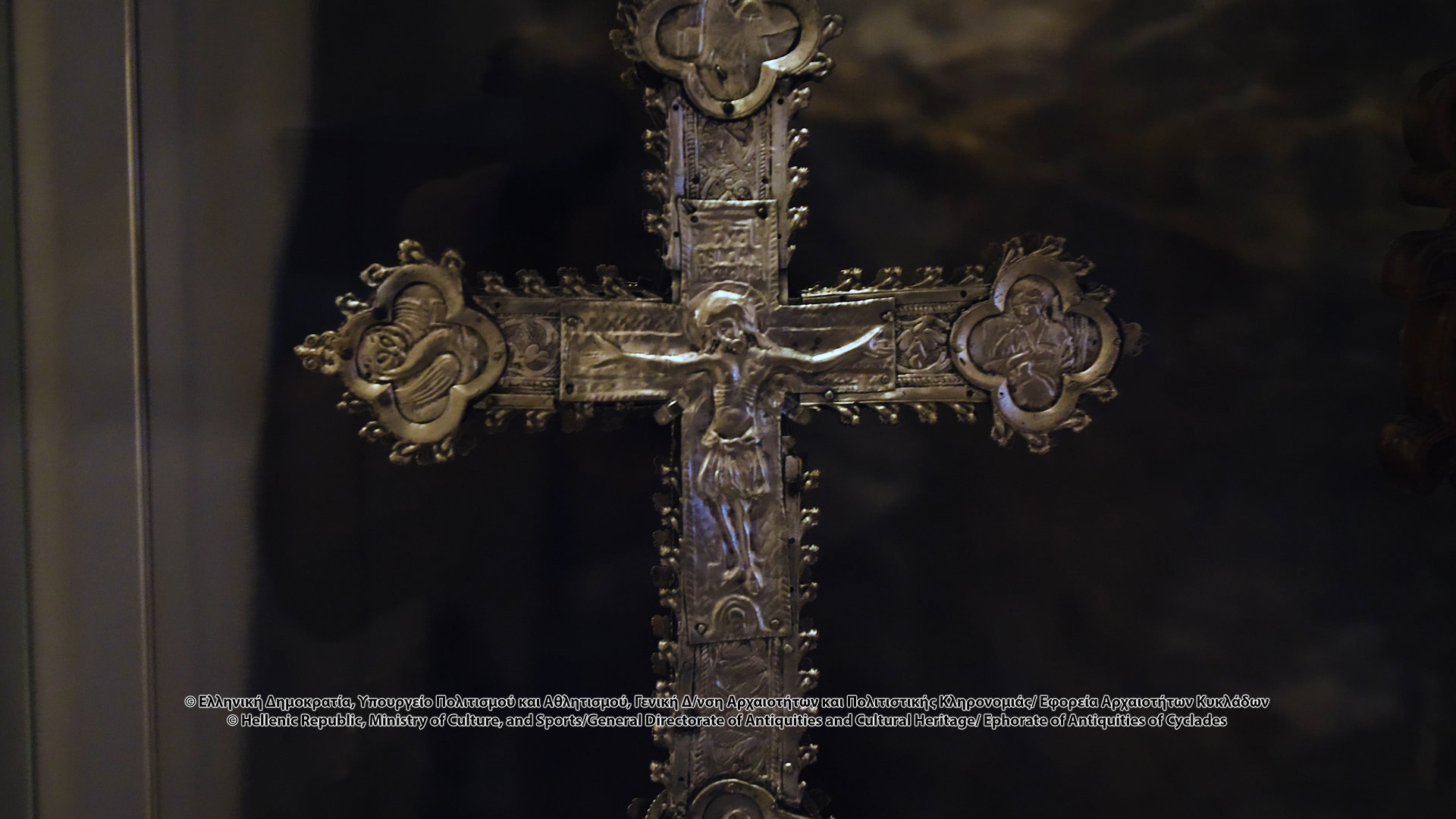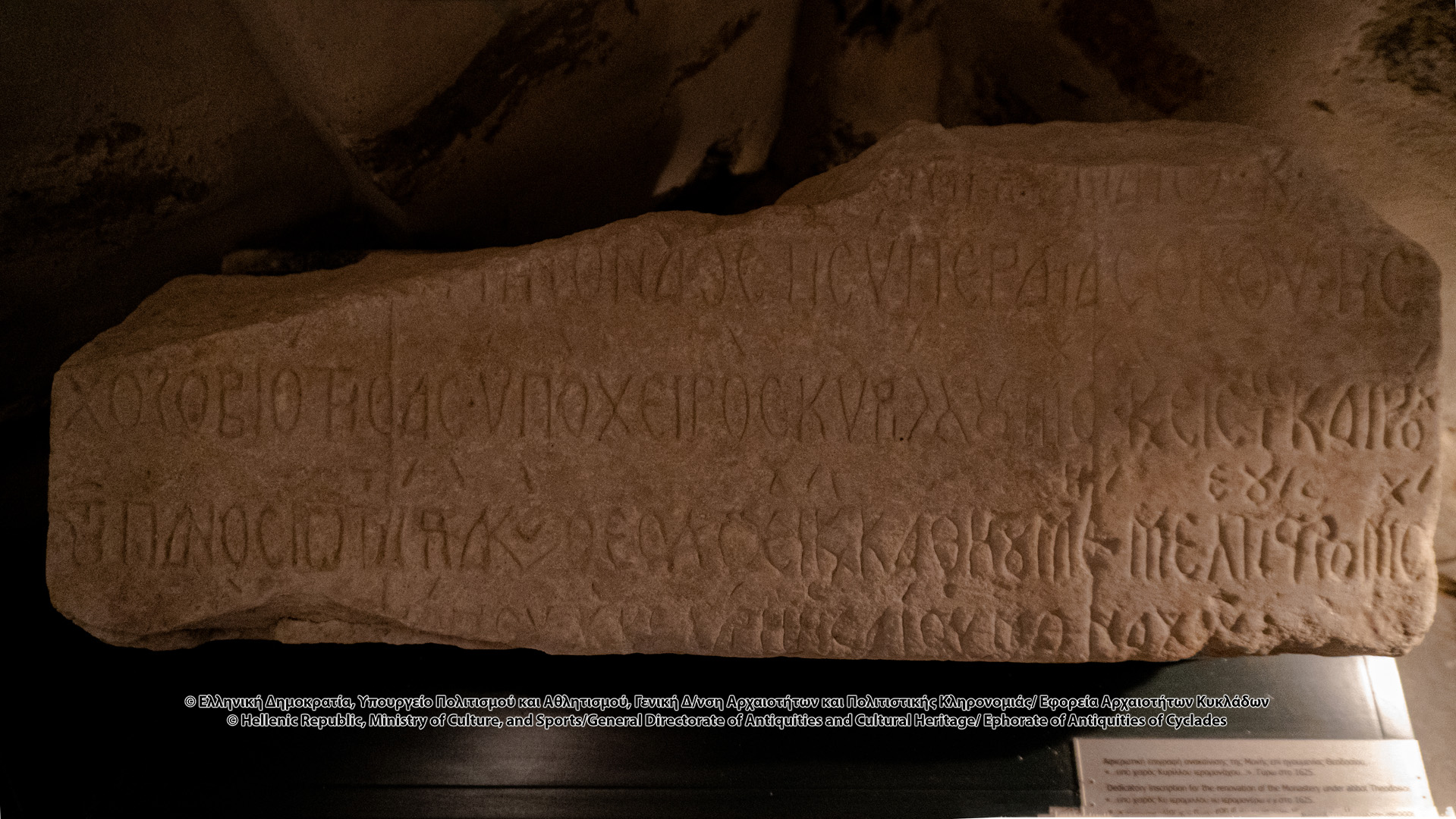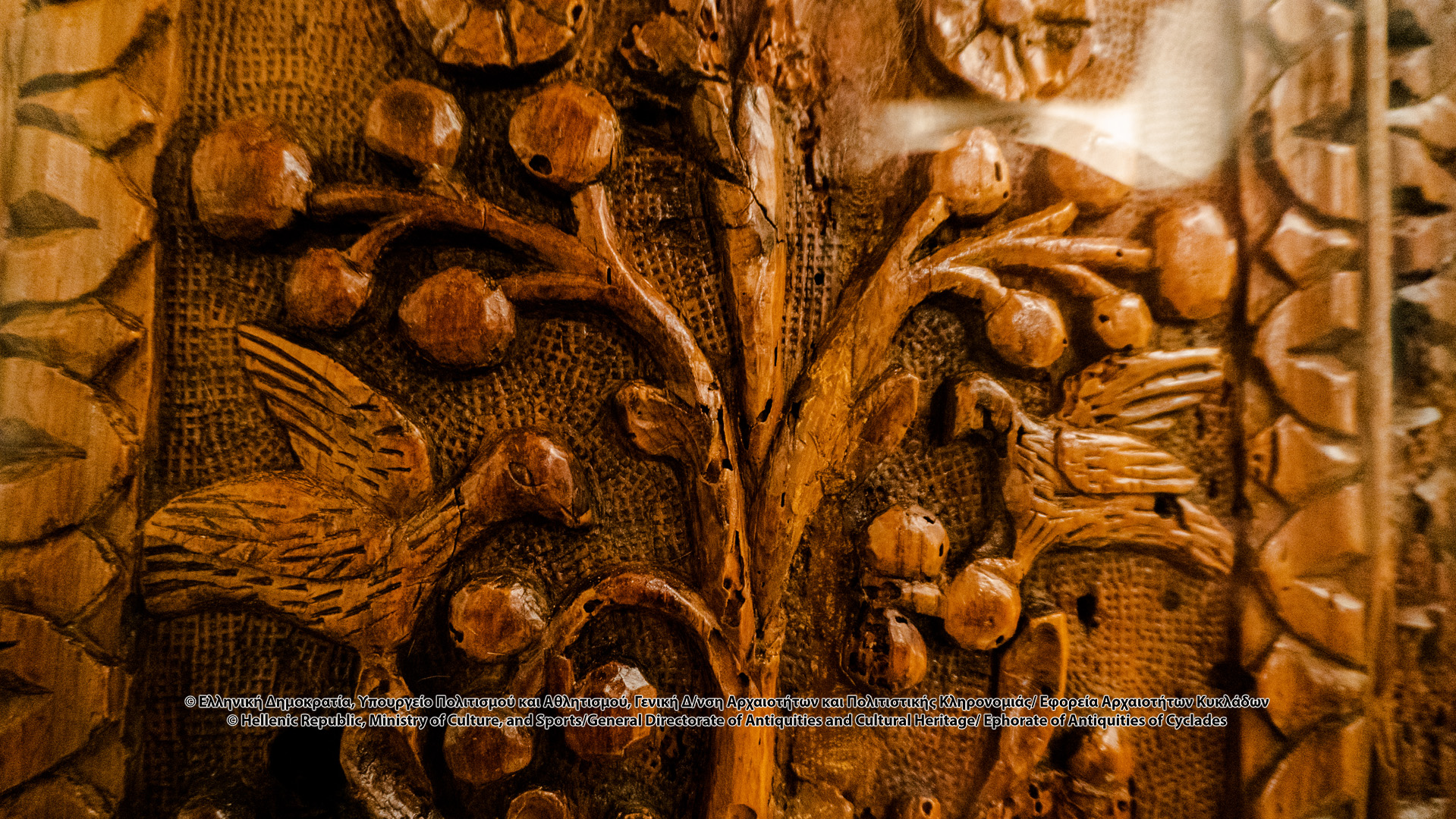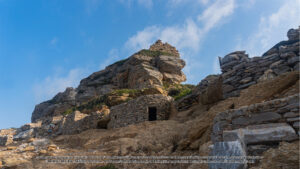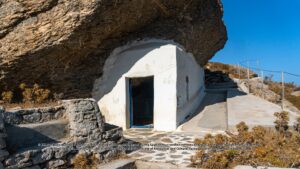The Collection of the Relics of the Monastery of Hozoviotissa includes exceptional samples of Byzantine and Post-Byzantine ecclesiastical art. The collection of manuscripts of the monastery, which numbers 98 codes, dating from the 10th to the 18th century and serving as a testament to the upgraded spiritual level of the monks, is renowned. These are quite remarkable works, in terms of content, writing and decoration: manuscripts, written on parchment and paper, Sigillia and Gospels, as well as codes on parchment dating from the 10th to the early 15th century, while the paper dates back to the Byzantine and Post-Byzantine times. (13th-18th century).
Among the Patriarchal Sigillia that recognize and renew the privileges of the Monastery, the very important Sigillion of the Patriarch Jeremias II of Constantinople, dating to 1583, is included, being one of the material items that have been saved and explicitly designate the Emperor of Byzantium Alexios I Komnenos as the owner of the Monastery, who with imperial gold bullion writing of the year 1088, which unfortunately is not saved, defined his twinning with the Monastery Agios Ioannis o Theologos in Patmos and granted crucifixion rights to the “venerable and royal and patriarchal Monastery [Hozoviotissa]”.
Several codes of the Post-Byzantine period have silver and gold-plated covers with intricate decoration. These include 23 parchment codes dating from the 10th to the 15th century and 72 paper codes dating from the 13th to the 19th century. The Gospel of the second half of the 11th century with six brilliant miniatures in a golden plain, a work of exquisite execution and luxurious structure, the handwritten Codex of Books of the Minor Old Testament Prophets (first half of the 10th century) and the handwritten Codex of the Words of John of Klimaka, dating to 1253, are memorable works.
The relics exhibition also includes important examples of embroidery, such as liturgical and priestly vestments, other priestly fabrics, gold textiles, some adorned with pearls, sequins and precious stones, others embroidered with gold thread and silver thread, the majority of the works of the 18th and 19th centuries. Also, accessories of the high priests’ valuable attire are on display: elaborate buckles to support the priestly belt, encolpia, crosses and more, all works of different 18th and 19th century silversmith workshops.
In addition, the visitor has the opportunity to admire valuable church utensils, for the needs of worship, such as crosses of sanctification-blessing and litany, holy grails (chalice), perfume jars, trays for the holy bread and the antidoron, holy water buckets, spoons, Dikiria and Trikiria, lanterns, incense burners, as well as a number of other useful objects and offerings, such as reliquaries and amulets, some of which inscribed, all samples of exquisite art.
The exhibition is completed by the door leaves of the Katholikon of the Monastery with a dedicatory inscription of Professor Gideon and the Hieromonk Anatolios Vlachos, a dedicatory inscription of the renovation of the Monastery and, finally, portable icons, exceptional samples of the art of Christian Art of the Orthodox Christian Faith. The Epitaph of the Monastery, of small dimensions, work of Agapios Prokos or Secondary of Sifnos, is worth mentioning, dating to 1820.
Emmanouel Ioannidis and Antonios Miliarakis made an important contribution to the search and rescue of the treasures of Hozoviotissa at the end of the 19th century, then Professor Linos Politis, who during the years 1968-1969 compiled a detailed, descriptive catalogue, and, finally, Agamemnon Tselikas from the Historical and Paleographic Archive of the Educational Institution of the National Bank, also made an important contribution in 1989, when all the manuscripts of the Monastery were microphotographed. A systematic recording of all the relics of the monastery was made, in the year 1977, by the Amorgian Professor of the University of Ioannina, Lila Marangou, with the personal care and scientific supervision of whom, the first visitable exhibition was set up at the Monastery Sacristy. It was then when for the first time the most important and well-preserved relics were presented in showcases donated by the Benaki Museum.
Means of access:
CAR
,
BUS
,
TAXI
,
TRADITIONAL PATH: "Palia Strata" Route
Chora – Monastery of Hozoviotissa- Kapsala – Asfontylitis – Potamos – Cove of Aegiali
Starting Point: "Kalogerikos" Point in the Chora.
Opening hours:
Daily.
Morning hours: 08:00-13:00.
Afternoon: 17:00-19:00.
August 6th closed: Celebration at the Glebe (Metochi) in the Chora.
Entry fees:
Free.
,
Guests should be properly dressed, men in trousers and women in skirt-blouse.

